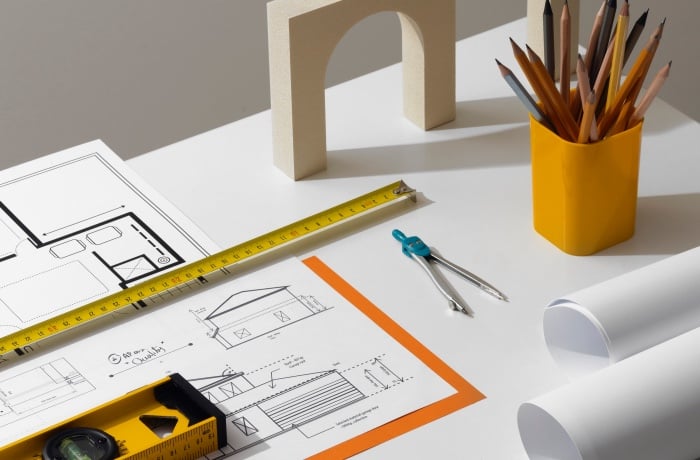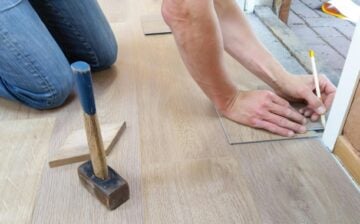Architecture isn’t always just about erecting partitions and roofs; it’s about developing spaces that resonate with reason, glide, and beauty. One of the most effective methods architects achieve this is through sectioning in architecture, a method that gives a deep dive right into a building’s internal dynamics. But what’s a well-designed interior without its barriers? Enter first-class fencing, the unsung hero that defines, protects, and enhances our outdoor environments.
In this newsletter, we will discover how those two elements—sectioning and fencing—work hand-in-hand to craft spaces which can be both practical and aesthetically eye-catching.

Understanding Architectural Sectioning
What Is Sectioning in Architecture?
At its center, sectioning includes cutting through a constructing to expose its inner shape. Imagine cutting a loaf of bread to see its internal layers. Similarly, architectural sections provide a vertical or horizontal “reduce” view of a constructing, showcasing partitions, floors, ceilings, and different elements in an in depth way.
Types of Sectional Views
- Full part: Complete cutting of the building and revealing all internal details.
- Offset section: The cutting level shifts to avoid blockage, providing a clearer view.
- Aligned Section: Multiple cuts along a single line, often used for long buildings.
Each type serves a unique purpose and helps the architect send out a specific design intent.
Importance of Sectioning in Design
Sectioning isn’t just about showing what’s inside; it’s about understanding the relationships between spaces. It helps in:
- Visualizing spatial hierarchies and flow.
- Determining structural elements and their placements.
- Selecting appropriate materials based on spatial needs.
The Role of Sectioning in Architectural Design
Spatial Relationships
By examining a segment, architects can determine how unique areas interact. For example, does the living room sense open and related to the kitchen? Are personal areas safely protected from public zones?
Structural Clarity
The sections reveal the skeleton of the building-on-track, columns and sections carrying costs. This readability ensures that the design is both secure and possible.
Material Selection
Understanding the interior layout aids in selecting substances that complement the gap’s feature. A section can indicate areas that require soundproofing, insulation, or aesthetic detailing.
Quality Fencing: Beyond Boundaries
What Constitutes Quality Fencing?
Quality fencing goes beyond mere enclosure. It’s about selecting materials and designs that offer:
- Durability: Resistant to climate, pests, and wear.
- Aesthetics: Enhances the property’s visible appeal.
- Functionality: Provides privacy, security, and noise discount.
Common Fencing Materials
- Wood: Provides a herbal look, but requires maintenance.
- Vinyl: Low-renovation and durable.
- Metal: Provides strength and security.
- Composite: Combines aesthetics with sturdiness.
Each material has its pros and cons, and the selection depends at the specific wishes and surroundings.
Integrating Sectioning and Fencing in Design
Creating Seamless Transitions
Architectural sections can inform fencing designs. For instance, if a section famous a private courtyard, the fencing can be designed to decorate that privacy at the same time as complementing the constructing’s aesthetics.
Design Considerations
When integrating fencing:
- Ensure it aligns with the building’s architectural style.
- Consider the purpose: Is it for privacy, security, or decoration?
- Account for maintenance needs based on material choice.
Innovative Fencing Solutions: The Cool Cat Fence
Introduction to the Cool Cat Fence
A cold fence of the cat is a modern fencing solution that combines the ability to style. Developed to meet a variety of needs, it offers customizable alternatives that cater to exceptional alternatives.
Features and Benefits
- Customizability: Offers a range of designs and materials.
- Easy installation: Designed for quick and efficient settings.
Applications in Modern Architecture
Integrating the Cool Cat Fence with architectural sectioning can cause designs which are both practical and aesthetically alluring. For example, the usage of sections to decide the nice placement of fences can beautify privacy and security with out compromising the general layout.
Practical Applications and Considerations
Choosing the Right Fencing Material
Consider the following when selecting a fencing material:
- Climate: Some substances are better suited for unique climate situations.
- Purpose: Determine if the fence is for privacy, safety, or decoration.
- Maintenance: Some materials require more maintenance than others.
Maintenance Tips
Regular protection guarantees the durability of the fence. For example, wooden fences may also moreover need staining or sealing, while vinyl fences would in all likelihood require occasional cleaning.
Budgeting and Cost Considerations
Fencing costs can vary based on cloth, layout, and installation. It’s vital to set a price range and select alternatives that offer the high-quality price for money.
Conclusion
In the realm of architecture, both sectioning and satisfactory fencing play pivotal roles. While sectioning presents a detailed insight right into a constructing’s internal dynamics, best fencing defines and protects the outside surroundings. Together, they make sure that spaces aren’t handiest purposeful but also harmonious and steady.
We hope you found this blog post on The Power of Sectioning in Architecture and Quality Fencing, useful. Be sure to check out our post on Benefits and Design Versatility of COLORBOND Fencing for more great tips!
Have Experience in the Moving Industry? Want an Additional Income Stream? Work With All Around Moving!
There are not recurrent expenses. You create your own schedule. Partner with us and we will help you earn extra income. Click here to learn more.





